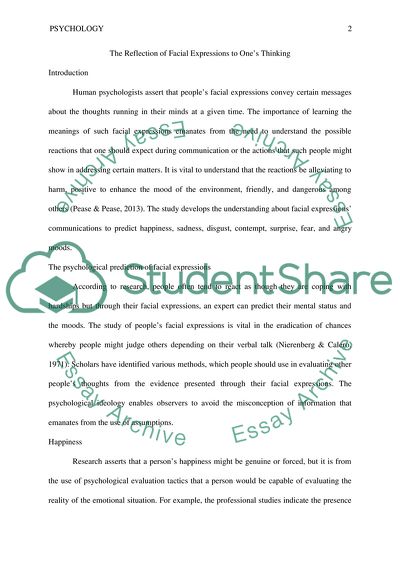Cite this document
(The Reflection of Facial Expressions to Ones Thinking Essay Example | Topics and Well Written Essays - 1250 words, n.d.)
The Reflection of Facial Expressions to Ones Thinking Essay Example | Topics and Well Written Essays - 1250 words. https://studentshare.org/psychology/1847843-how-does-our-body-langauage-reflect-our-thinking
The Reflection of Facial Expressions to Ones Thinking Essay Example | Topics and Well Written Essays - 1250 words. https://studentshare.org/psychology/1847843-how-does-our-body-langauage-reflect-our-thinking
(The Reflection of Facial Expressions to Ones Thinking Essay Example | Topics and Well Written Essays - 1250 Words)
The Reflection of Facial Expressions to Ones Thinking Essay Example | Topics and Well Written Essays - 1250 Words. https://studentshare.org/psychology/1847843-how-does-our-body-langauage-reflect-our-thinking.
The Reflection of Facial Expressions to Ones Thinking Essay Example | Topics and Well Written Essays - 1250 Words. https://studentshare.org/psychology/1847843-how-does-our-body-langauage-reflect-our-thinking.
“The Reflection of Facial Expressions to Ones Thinking Essay Example | Topics and Well Written Essays - 1250 Words”. https://studentshare.org/psychology/1847843-how-does-our-body-langauage-reflect-our-thinking.


